Who
Josh Jorgensen, CEO of Mission Ridge, Washington and Blacktail Mountain, Montana
Recorded on
April 15, 2024
About Mission Ridge
Click here for a mountain stats overview
Owned by: Larry Scrivanich
Located in: Wenatchee, Washington
Year founded: 1966
Pass affiliations:
Indy Pass – 2 days with holiday and weekend blackouts (TBD for 2024-25 ski season)
Indy+ Pass – 2 days with no blackouts
Powder Alliance – 3 days with holiday and Saturday blackouts
Closest neighboring ski areas: Badger Mountain (:51), Leavenworth Ski Hill (:53) – travel times may vary considerably given weather conditions, time of day, and time of year.
Base elevation: 4,570 feet
Summit elevation: 6,820 feet
Vertical drop: 2,250 feet
Skiable Acres: 2,000
Average annual snowfall: 200 inches
Trail count: 70+ (10% easiest, 60% more difficult, 30% most difficult)
Lift count: 7 (1 high-speed quad, 3 doubles, 2 ropetows, 1 carpet – view Lift Blog’s inventory of Mission Ridge’s lift fleet)
View historic Mission Ridge trailmaps on skimap.org.
About Blacktail
Click here for a mountain stats overview
Owned by: Larry Scrivanich
Located in: Lakeside, Montana
Year founded: 1998
Pass affiliations:
Indy Pass – 2 days with holiday and weekend blackouts (TBD for 2024-25 ski season)
Indy+ Pass – 2 days with no blackouts
Powder Alliance – 3 days with holiday blackouts
Closest neighboring ski areas: Whitefish (1:18) - travel times may vary considerably given weather conditions, time of day, and time of year.
Base elevation: 5,236 feet
Summit elevation: 6,780 feet
Vertical drop: 1,544 feet
Skiable Acres: 1,000+
Average annual snowfall: 250 inches
Trail count: (15% easier, 65% more difficult, 20% most difficult)
Lift count: 4 (1 triple, 2 doubles, 1 carpet – view Lift Blog’s inventory of Blacktail’s lift fleet)
View historic Blacktail trailmaps on skimap.org.
Why I interviewed him
So much of Pacific Northwest skiing’s business model amounts to wait-and-pray, hoping that, sometime in November-December, the heaping snowfalls that have spiraled in off the ocean for millennia do so again. It’s one of the few regions in modern commercial skiing, anywhere in the world, where the snow is reliable enough and voluminous enough that this good-ole-boy strategy still works: 460 inches per year at Stevens Pass; 428 at Summit at Snoqualmie; 466 at Crystal; 400 at White Pass; a disgusting 701 at Baker. It’s no wonder that most of these ski areas have either no snowguns, or so few that a motivated scrapper could toss the whole collection in the back of a single U-Haul.
But Mission Ridge possesses no such natural gifts. The place is snowy enough – 200 inches in an average winter – that it doesn’t seem ridiculous that someone thought to run lifts up the mountain. But by Washington State standards, the place is practically Palm Beach. That means the owners have had to work a lot harder, and in a far more deliberate way than their competitors, to deliver a consistent snowsportskiing experience since the bump opened in 1966.
Which is a long way of saying that Mission Ridge probably has more snowmaking than the rest of Washington’s ski areas combined. Which, often, is barely enough to hang at the party. This year, however, as most Washington ski areas spent half the winter thinking “Gee, maybe we ought to have more than zero snowguns,” Mission was clocking its third-best skier numbers ever.
The Pacific Northwest, as a whole, finished the season fairly strong. The snow showed up, as it always does. A bunch of traditional late operators – Crystal, Meadows, Bachelor, Timberline – remain open as of early May. But, whether driven by climate change, rising consumer expectations, or a need to offer more consistent schedules to seasonal employees, the region is probably going to have to build out a mechanical complement to its abundant natural snows at some point. From a regulatory point of view, this won’t be so easy in a region where people worry themselves into a coma about the catastrophic damage that umbrellas inflict upon raindrops. But Mission Ridge, standing above Wenatchee for decades as a place of recreation and employment, proves that using resources to enable recreation is not incompatible with preserving them.
That’s going to be a useful example to have around.

What we talked about
A lousy start to winter; a top three year for Mission anyway; snowmaking in Washington; Blacktail’s worst snowfall season ever and the potential to add snowmaking to the ski area; was this crappy winter an anomaly or a harbinger?; how Blacktail’s “long history of struggle” echoes the history of Mission Ridge; what could Blacktail become?; Blacktail’s access road; how Blacktail rose on Forest Service land in the 1990s; Blacktail expansion potential; assessing Blacktail’s lift fleet; could the company purchase more ski areas?; the evolution of Summit at Snoqualmie; Mission Ridge’s large and transformative proposed expansion; why the expansion probably needs to come before chairlift upgrades; Fantasy Lift Upgrade; and why Mission Ridge replaced a used detachable quad with another used detachable quad.
Why I thought that now was a good time for this interview
Washington skiing is endangered by a pretty basic problem: more people in this ever-richer, ever more-populous state want to ski than there are ski areas for them to visit. Building new ski areas is impossible – you’d have better luck flying an American flag from the roof of the Kremlin than introducing a new mountain to Washington State. That shortage is compounded by the lack of slopeside development, which compels every skier to drive to the hill every day that they want to ski. This circumstance reflects a false commitment to environmental preservation, which mistakes a build-nothing philosophy for watching over Mother Earth, an outmoded way of thinking that fails to appreciate the impacts of sprawl and car culture on the larger natural ecosystem.
Which is where Mission Ridge, with its large proposed ski-and-stay expansion, is potentially so important. If Mission Ridge can navigate the bureaucratic obstacle course that’s been dropped in its path, it could build the first substantial slopeside village in the Pacific Northwest. That could be huge. See, it would say, you can have measured development in the mountains without drowning all the grizzly bears. And since not everyone would have to drive up the mountain every day anymore, it would probably actually reduce traffic overall. The squirrels win and so do the skiers. Or something like that.
And then we have Blacktail. Three-ish years ago, Mission Ridge purchased this little-known Montana bump, one of the West’s few upside-down ski areas, an unlikely late addition to the Forest Service ski area network seated south of Whitefish Mountain and Glacier National Park. I was surprised when Mission bought it. I think everyone else was too. Mission Ridge is a fine ski area, and one with multi-mountain roots – it was once part of the same parent company that owned Schweitzer (now the property of Alterra) – but it’s not exactly Telluride. How did a regional bump that was still running three Riblet doubles from the ‘60s and ‘70s afford another ski area two states away? And why would they want it? And what were they going to do with it?
All of which I discuss, sort of, with Jorgensen. Mission and Blacktail are hardly the strangest duo in American skiing. They make more sense, as a unit, than jointly owned Red Lodge, Montana and Homewood, California. But they’re also not as logical as New York’s Labrador and Song, Pennsylvania’s Camelback and Blue, or Massachusett’s Berkshire East and Catamount, each of which sits within easy driving distance of its sister resort. So how do they fit together? Maybe they don’t need to.
Questions I wish I’d asked
There’s a pretty cool story about a military bomber crashing into the mountain (and some associated relics) that I would have liked to have gotten into. I’d also have liked to talk a bit more about Wenatchee, which Mission’s website calls “Washington’s only true ski town.” I also intended to get a bit more into the particulars of the expansion, including the proposed terrain and lifts, and what sort of shape the bedbase would take. And I didn’t really ask, as I normally do, about the Indy Pass and the reciprocal season pass relationship between the two ski areas.
What I got wrong
I said that Mission Ridge’s first high-speed quad, Liberator Express, came used from Crystal Mountain. The lift actually came used from Winter Park. Jorgensen corrected that fact in the podcast. My mis-statement was the result of crossing my wires while prepping for this interview – the Crystal chairlift at Blacktail moved to Montana from Crystal Mountain, Washington. In the moment, I mixed up the mountains’ lift fleets.
Why you should ski Mission Ridge
Mission Ridge holds echoes of Arapahoe Basin’s East Wall or pre-tram Big Sky: so much damn terrain, just a bit too far above the lifts for most of us to bother with. That, along with the relatively low snowfall and Smithsonian lift fleet, are the main knocks on the place (depending, of course, upon your willingness to hike and love of vintage machinery).
But, on the whole, this is a good, big ski area that, because of its snowmaking infrastructure, is one of the most reliable operators for several hundred miles in any direction. The intermediate masses will find a huge, approachable footprint. Beginners will find their own dedicated lift. Better skiers, once they wear out the blacks off lifts 2 and 4, can hike the ridge for basically endless lines. And if you miss daylight, Mission hosts some of the longest top-to-bottom night-skiing runs in America, spanning the resort’s entire 2,250 vertical feet (Keystone’s Dercum mountain rises approximately 2,300 vertical feet).
If Mission can pull off this expansion, it could ignite a financial ripple effect that would transform the resort quickly: on-site housing and expanded beginner terrain could bring more people (especially families), which would bring more revenue, which would funnel enough cash in to finally upgrade those old Riblets and, maybe, string the long-planned Lift 5 to the high saddle.

That would be amazing. But it would also transform Mission into something different than what it is today. Go see it now, so you can appreciate whatever it becomes.
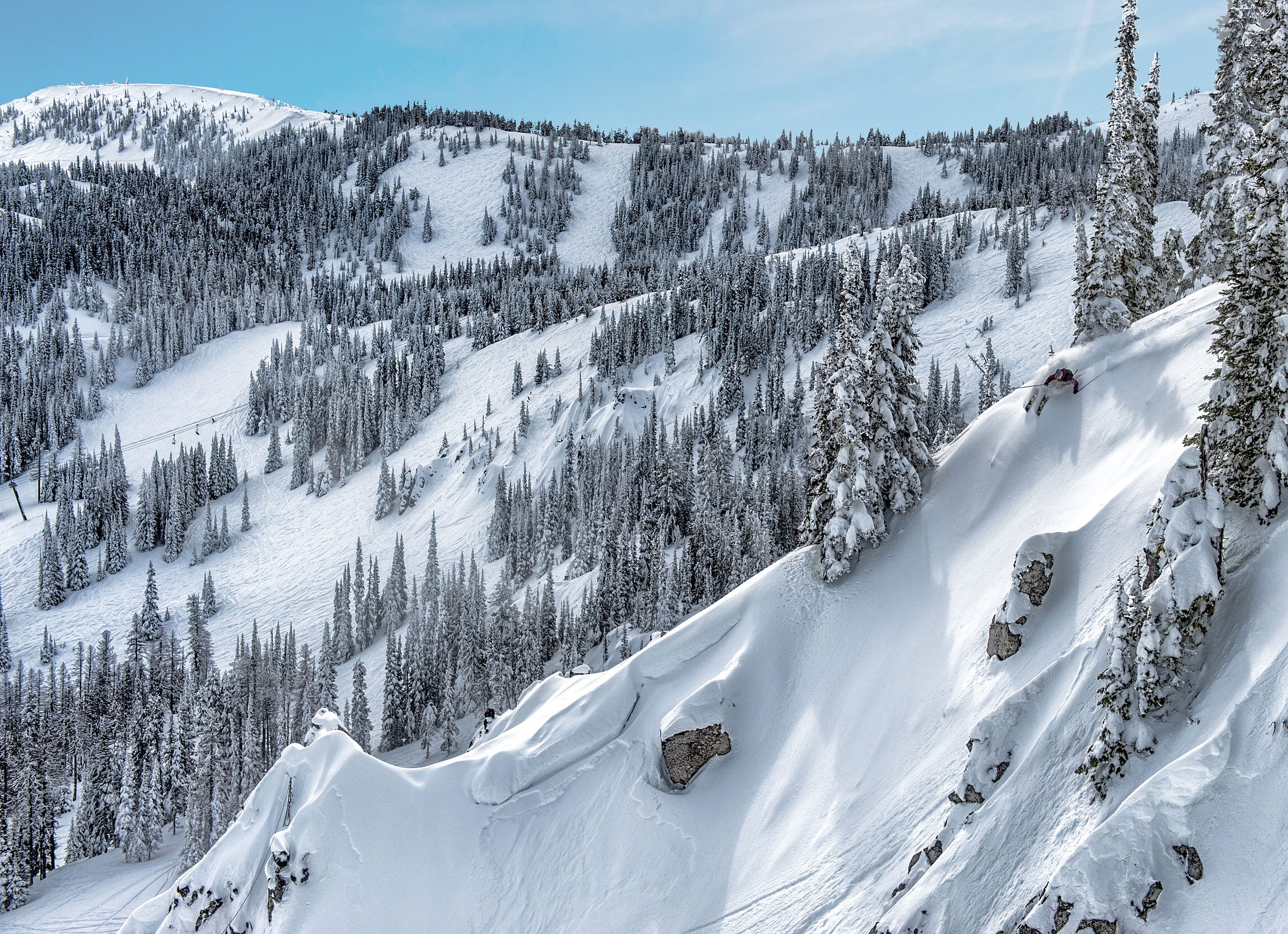
Why you should ski Blacktail
Blacktail’s original mission, in the words of founder Steve Spencer, was to be the affordable locals’ bump, a downhome alternative to ever-more-expensive Whitefish, a bit more than an hour up the road. That was in 1998, pre-Epic, pre-Ikon, pre-triple-digit single-day lift tickets. Fast forward to 2024, and Whitefish is considered a big-mountain outlier, a monster that’s avoided every pass coalition and offers perhaps the most affordable lift ticket of any large, modern ski area in America (its top 2023-24 lift ticket price was $97).
That has certainly complicated Blacktail’s market positioning. It can’t play Smugglers’ Notch ($106 top lift ticket price) to neighboring Stowe ($220-ish). And while Blacktail’s lift tickets and season passes ($450 early-bird for the 2024-25 ski season), are set at a discount to Whitefish’s, the larger mountain’s season pass goes for just $749, a bargain for a 3,000-acre sprawl served by four high-speed lifts.
So Blacktail has to do what any ski area that’s orbiting a bigger, taller, snowier competitor with more and better terrain does: be something else. There will always be a market for small and local skiing, just like there will always be a market for diners and bars with pool tables and dartboards hanging from the walls.
That appeal is easy enough for locals to understand. For frequent, hassle-free skiing, small is usually better than big. It’s more complicated to pitch a top-of-the-mountain parking lot to you, a probably not-local, who, if you haul yourself all the way to Montana, is probably going to want the fireworks show. But one cool thing about lingering in the small and foreign is that the experience unites the oft-opposed-in-skiing forces of novelty and calm. Typically, our ski travels involve the raucous and the loud and the fast and the enormous. But there is something utterly inspiring about setting yourself down on an unfamiliar but almost empty mountain, smaller than Mt. Megaphone but not necessarily small at all, and just setting yourself free to explore. Whatever Blacktail doesn’t give you, it will at least give you that.
Podcast Notes
On Mission Ridge’s proposed expansion
While we discuss the mountain’s proposed expansion in a general way, we don’t go deep into specifics of lifts and trails. This map gives the best perspective on how the expansion would blow Mission Ridge out into a major ski area - the key here is less the ski expansion itself than the housing that would attend it:
Here’s an overhead view:
Video overviews:
The project, like most ski area expansions in U.S. America, has taken about 700 years longer than it should have. The local radio station published this update in October:
Progress is being made with the long-planned expansion of Mission Ridge Ski & Board Resort.
Chelan County is working with the resort on an Environmental Impact Statement.
County Natural Resources Director Mike Kaputa says it'll be ready in the next eight months or so.
"We are getting closer and closer to having a draft Environmental Impact Statement and I think that's probably, I hate to put a month out there, but I think it's probably looking like May when we'll have a draft that goes out for public comment."
The expansion plan for Mission Ridge has been in the works since 2014, and the resort brought a lawsuit against the county in 2021 over delays in the process.
The lawsuit was dismissed earlier this year.
Kaputa gave an update on progress with the Mission Ridge expansion before county commissioners Monday, where he said they're trying to get the scope of the Environmental Impact Statement right.
"You want to be as thorough as possible," Kaputa said. "You don't want to overdo it. You want to anticipate comments. I'm sure we'll get lots of comments when it comes out."
In 2014, Larry Scrivanich, owner of Mission Ridge, purchased approximately 779 acres of private land adjacent to the current Mission Ridge Ski and Board Resort.
Since then, Mission Ridge has been forging ahead with plans for expansion.
The expansion plans call for onsite lodging and accommodations, which Mission Ridge calls a game changer, which would differentiate the resort from others in the Northwest.
I’m all about process, due diligence, and checks-and-balances, but it’s possible we’ve overcorrected here.
On snowfall totals throughout Washington
Mission gets plenty of snow, but it’s practically barren compared to the rest of Washington’s large ski areas:
On the founding of Blacktail
Blacktail is an outlier in U.S. skiing in that it opened in 1998 on Forest Service land – decades after similarly leased ski areas debuted. Daily Inter Lake summarizes the unusual circumstances behind this late arrival:
Steve Spencer had been skiing and working at Big Mountain [now Whitefish] for many years, starting with ski patrol and eventually rising to mountain manager, when he noticed fewer and fewer locals on the hill.
With 14 years as manager of Big Mountain under his belt, Spencer sought to create an alternative to the famous resort that was affordable and accessible for locals. He got together with several business partners and looked at mountains that they thought would fit the bill.
They considered sites in the Swan Range and Lolo Peak, located in the Bitterroot Range west of Missoula, but they knew the odds of getting a Forest Service permit to build a ski area there were slim to none.
They had their eyes on a site west of Flathead Lake, however, that seemed to check all the right boxes. The mountain they focused on was entirely surrounded by private land, and there were no endangered species in the area that needed protection from development.
Spencer consulted with local environmental groups before he’d spent even “two nickels” on the proposal. He knew that without their support, the project was dead on arrival.
That mountain was known as Blacktail, and when the Forest Service OK’d ski operations there, it was the first ski area created on public land since 1978, when Beaver Creek Resort was given permission to use National Forest land in Colorado.
Blacktail Mountain Ski Area celebrates its 25th anniversary next year, it is still the most recent in the country to be approved through that process.
On Glacier National Park and Flathead Lake
Even if you’ve never heard of Blacktail, it’s stuffed into a dense neighborhood of outdoor legends in northern Montana, including Glacier National Park and Whitefish ski area:
On Whitefish
With 3,000 skiable acres, a 2,353-foot vertical drop, and four high-speed lifts, Whitefish, just up the road from Blacktail, looms enormously over the smaller mountain’s potential:
But while Whitefish presents as an Epkon titan, it acts more like a backwater, with peak-day lift tickets still hanging out below the $100 mark, and no megapass membership on its marquee. I explored this unusual positioning with the mountain’s president, Nick Polumbus, on the podcast last year (and also here).
On “Big Mountain”
For eons, Whitefish was known as “Big Mountain,” a name they ditched in 2007 because, as president and CEO at the time Fred Jones explained, the ski area was “often underestimated and misunderstood” with its “highly generic” name.
On “upside-down” ski areas
Upside-down ski areas are fairly common in the United States, but they’re novel enough that most people feel compelled to explain what they mean when they bring one up: a ski area with the main lodge and parking at the top, rather than the bottom, of the hill.
These sorts of ski areas are fairly common in the Midwest and proliferate in the Mid-Atlantic, but are rare out west. An incomplete list includes Wintergreen, Virginia; Snowshoe, West Virginia; Laurel, Blue Knob, Jack Frost, and Ski Big Bear, Pennsylvania; Otsego, Treetops, and the Jackson Creek Summit side of Snowriver, Michigan; and Spirit Mountain and Afton Alps, Minnesota. A few of these ski areas also maintain lower-level parking lots. Shawnee Mountain, Pennsylvania, debuted as an upside-down ski area, but, through a tremendous engineering effort, reversed that in the 1970s – a project that CEO Nick Fredericks detailed for us in a 2021 Storm Skiing Podcast.
On LIDAR mapping
Jorgensen mentions LIDAR mapping of Mission Ridge’s potential expansion. If you’re unfamiliar with this technology, it’s capable of giving astonishing insights into the past:
On Blacktail’s chairlifts
All three of Blacktail’s chairlifts came used to the ski area for its 1998 opening. The Crystal double is from Crystal Mountain, Washington; the Olympic triple is from Canada Olympic Park in Alberta; and the Thunderhead double migrated from Steamboat, Colorado.
On Riblet chairlifts
For decades, the Riblet double has been the workhorse of Pacific Northwest skiing. Simple, beautiful, reliable, and inexpensive, dozens of these machines still crank up the region’s hills. But the company dissolved more than two decades ago, and its lifts are slowly retiring. Mission Ridge retains three (chairs 1, 3, and 4, which date, respectively, to 1966, 1967, and 1971), and has stated its intent to replace them all, whenever funds are available to do so.
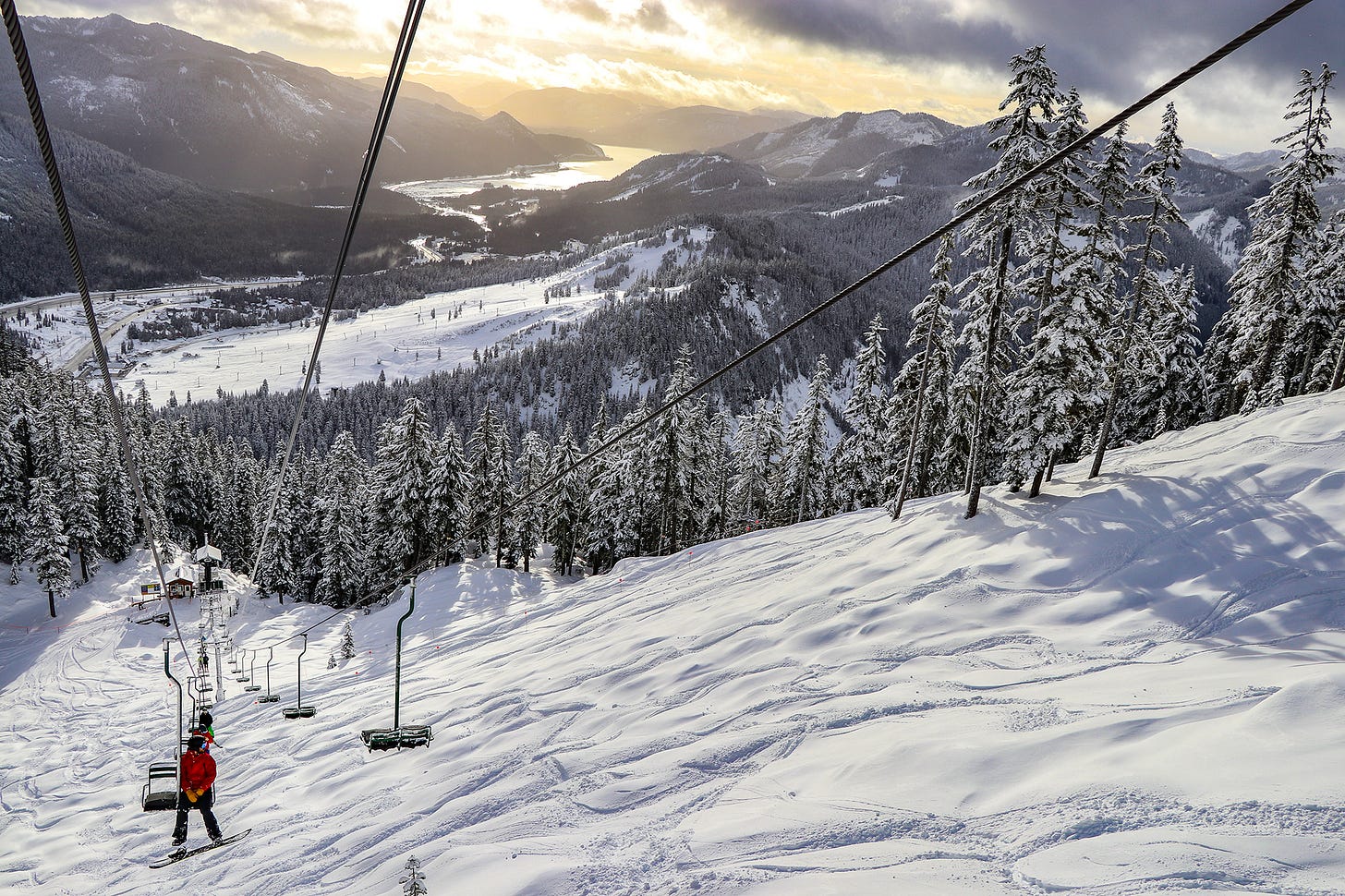
On the history of Summit at Snoqualmie
The Summit at Snoqualmie, where Jorgensen began his career, remains one of America’s most confusing ski areas: the name is convoluted and long, and the campus sprawls over four once-separate ski areas, one of which sits across an interstate with no ski connection to the others. There’s no easy way to understand that Alpental – one of Washington’s best ski areas – is part of, but separate from, the Summit at Snoqualmie complex, and each of the three Summit areas – East, Central, and West - maintains a separate trailmap on the website, in spite of the fact that the three are interconnected by ski trails. It’s all just very confusing. The ski area’s website maintains a page outlining how these four ski areas became one ski area that is still really four ski areas. This 1998 trailmap gives the best perspective on where the various ski nodes sit in relation to one another:
Because someone always gets mad about everything, some of you were probably all pissed off that I referred to the 1990s version of Summit at Snoqualmie as a “primitive” ski area, but the map above demonstrates why: 17 of 24 chairlifts were Riblet doubles; nine ropetows supplemented this system, and the mountain had no snowmaking (it still doesn’t). Call it “retro” or whatever you want, but the place was not exactly Beaver Creek.
On Vail and Alterra’s Washington timeline
I mentioned Washington’s entrance onto the national ski scene over the past decade. What I meant by that was the addition of Summit and Crystal onto the Ikon Pass for the 2018-19 ski season, and Stevens Pass onto the Epic Pass the following winter. But Washington skiing – and Mt. Baker in particular – has always been a staple in the Temple of the Brobots, and Boyne Resorts, pre-Ikon, owned Crystal from 1997 to 2017.
On Anthony Lakes
Jorgensen mentioned that he applied for the general manager position at Anthony Lakes, a little-known 900-footer lodged in the western Oregon hinterlands. One triple chair serves the entire ski area:
The Storm publishes year-round, and guarantees 100 articles per year. This is article 33/100 in 2024, and number 533 since launching on Oct. 13, 2019.





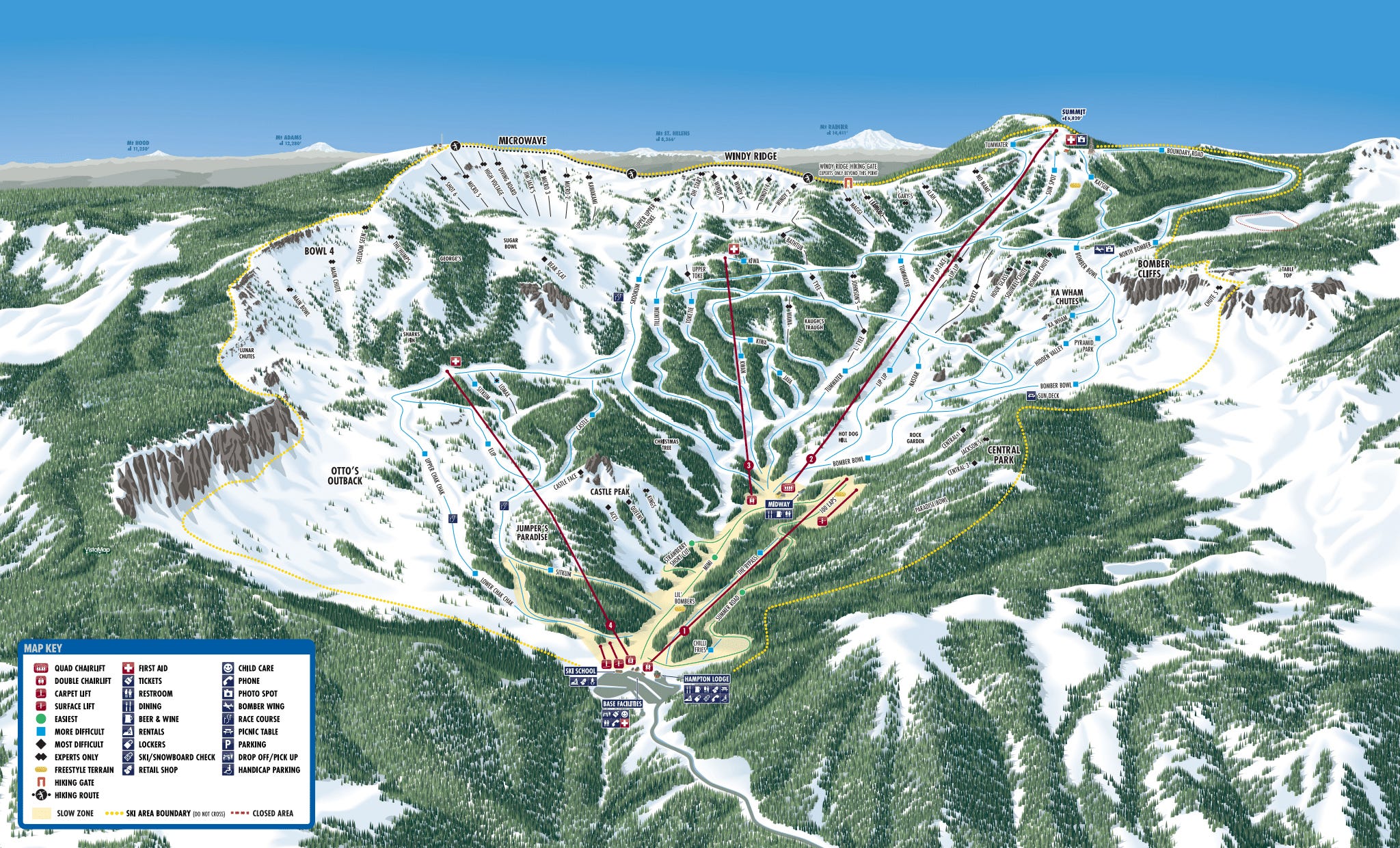

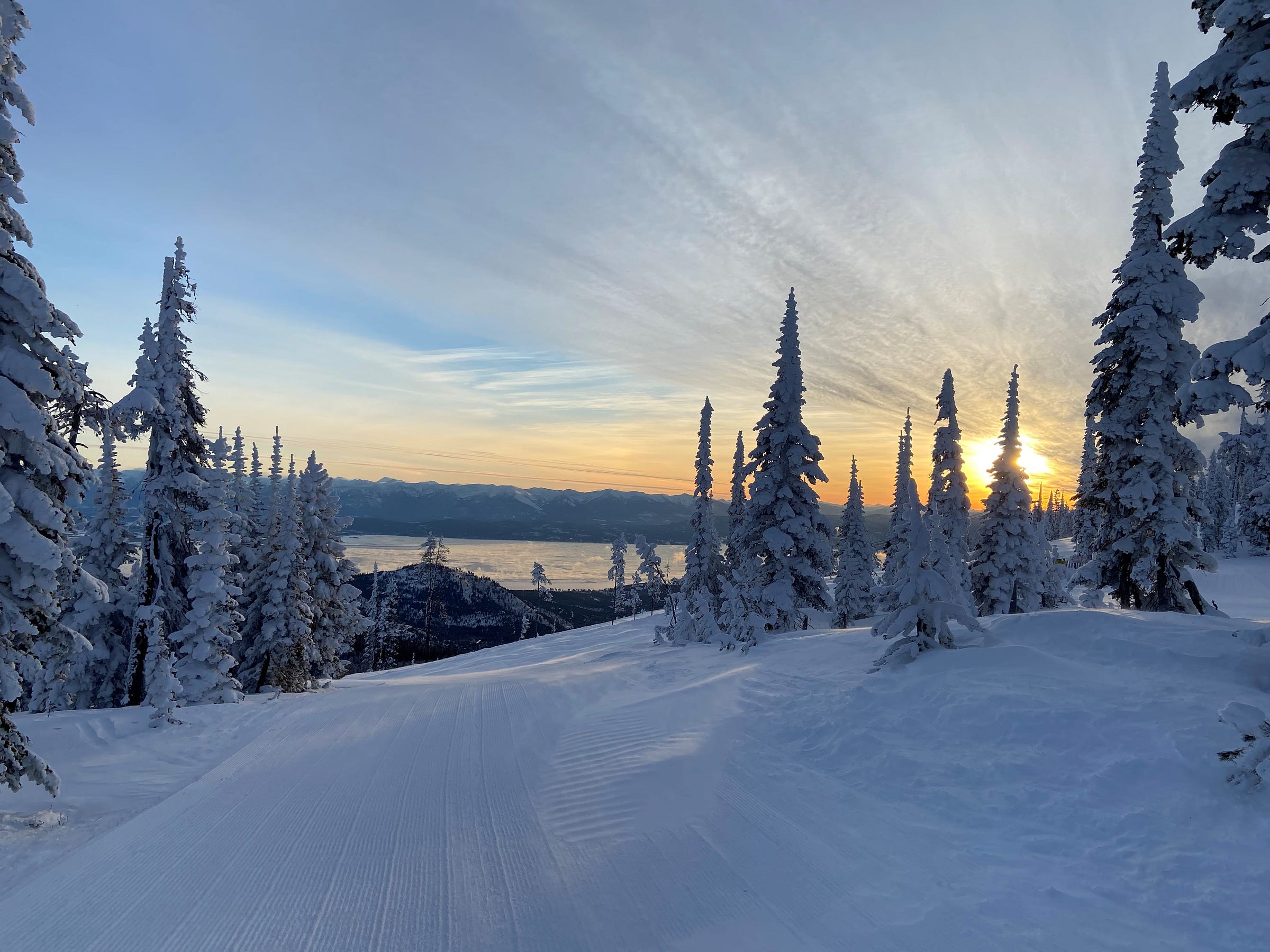

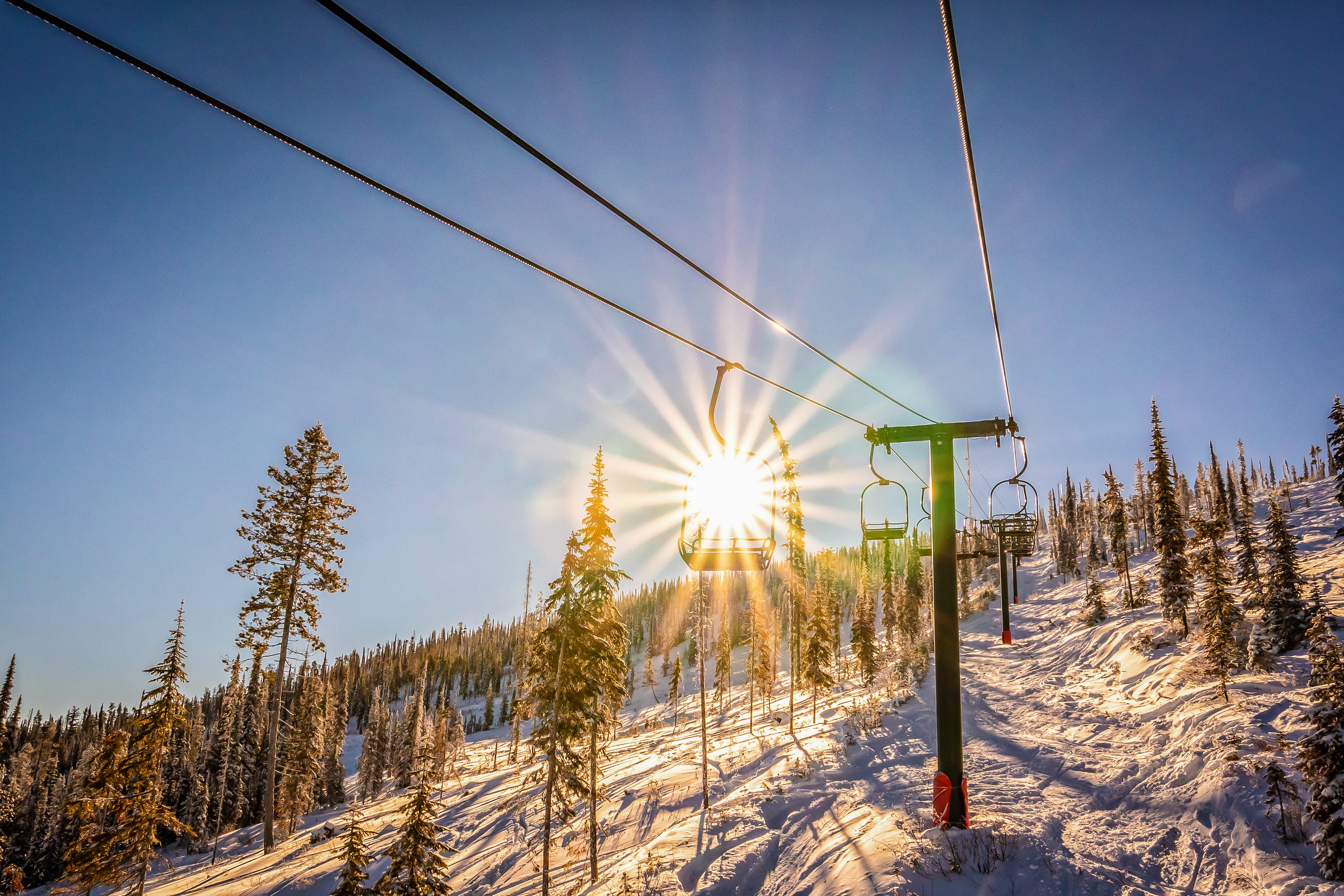


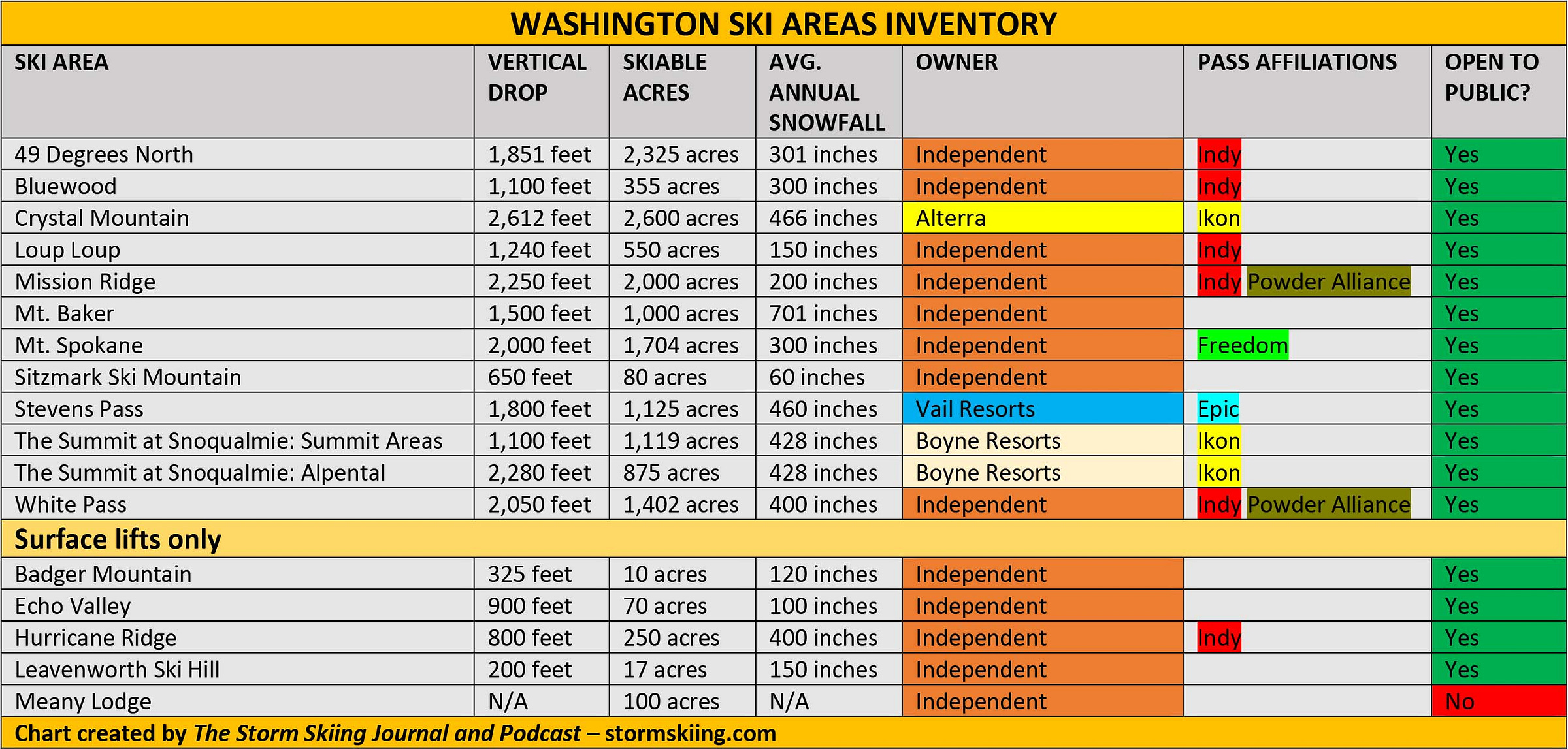

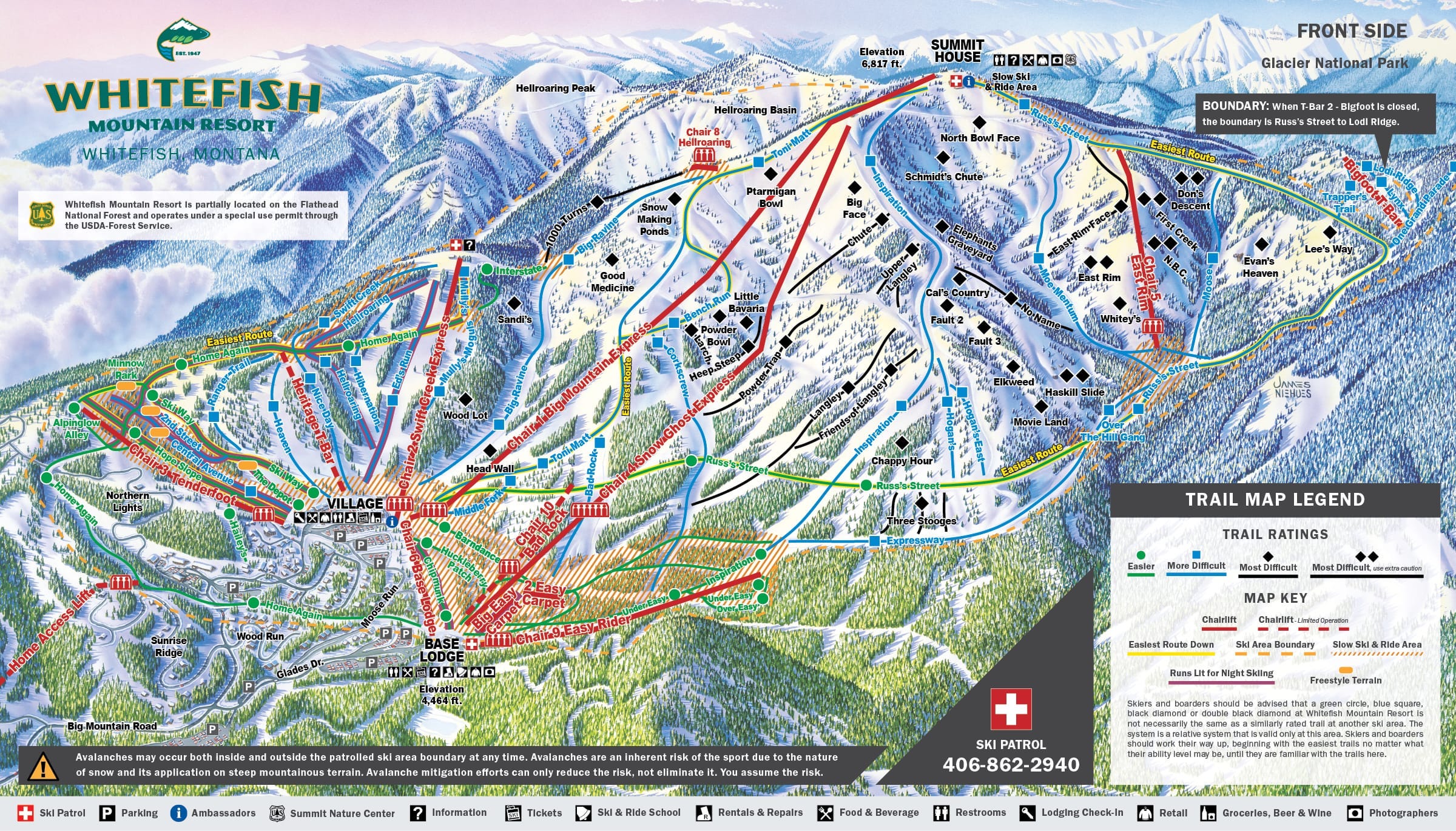





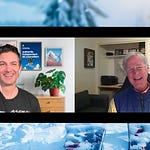


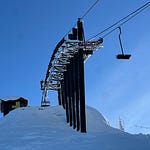


Share this post